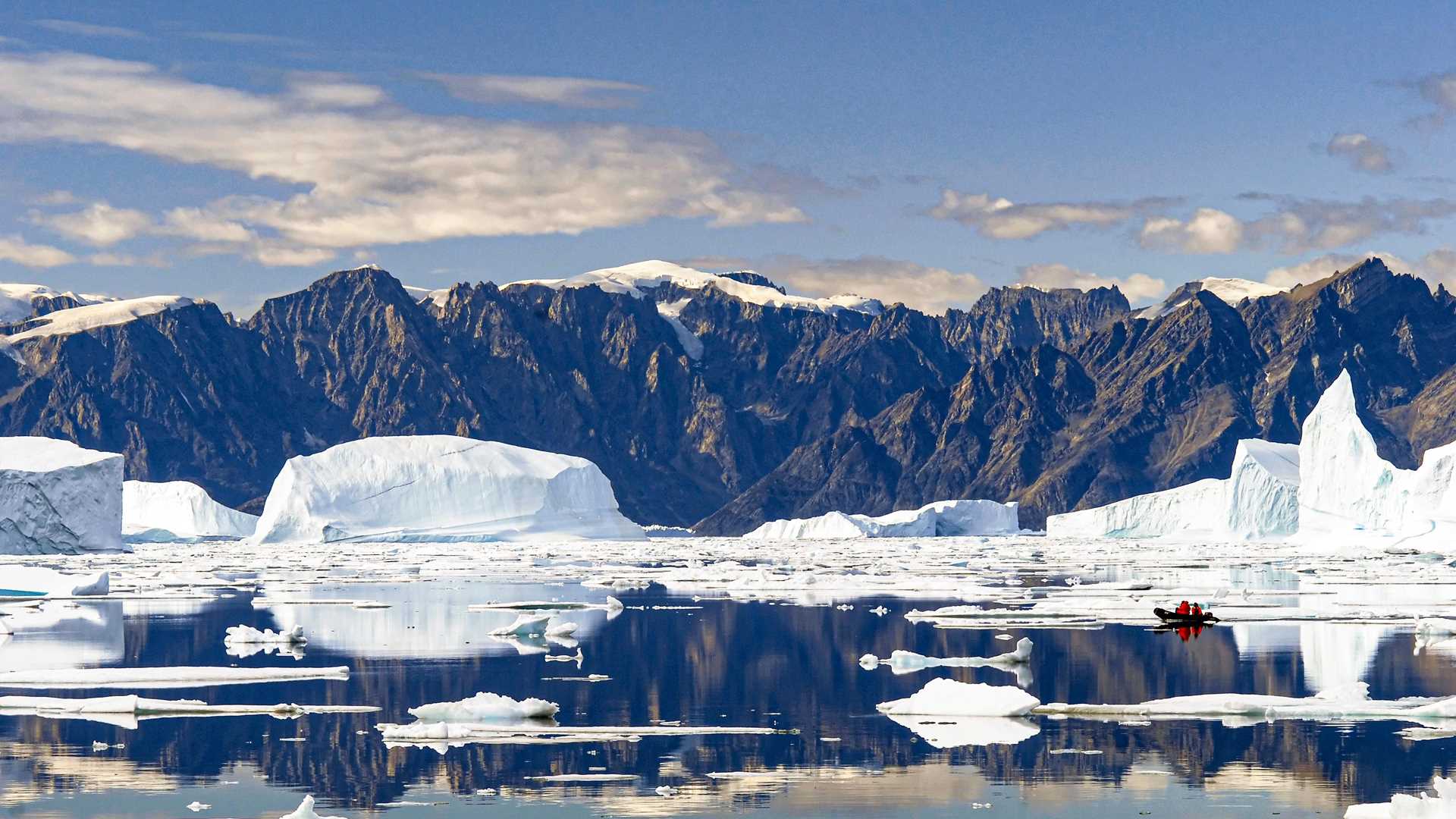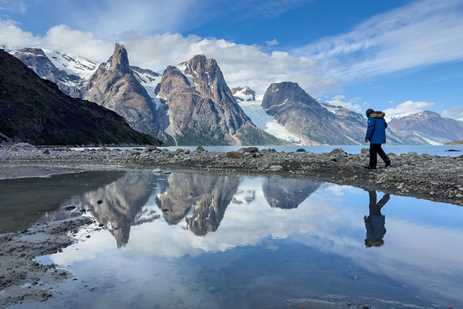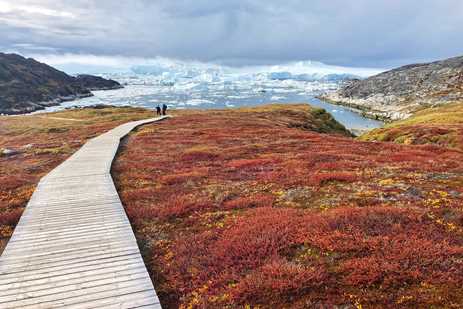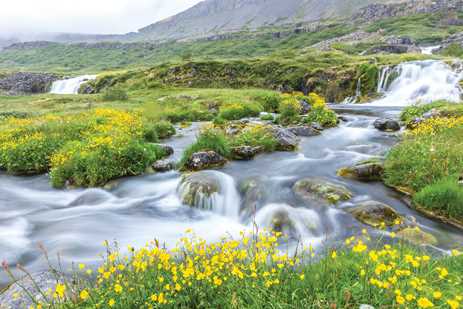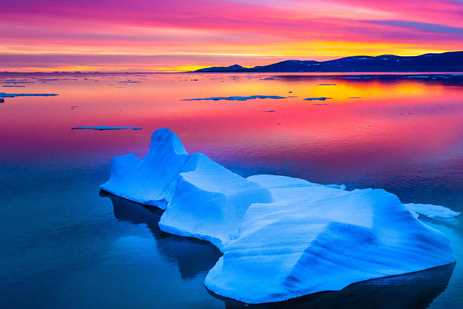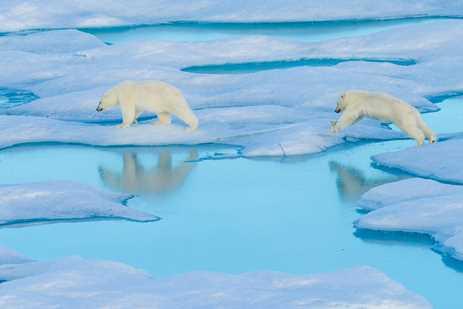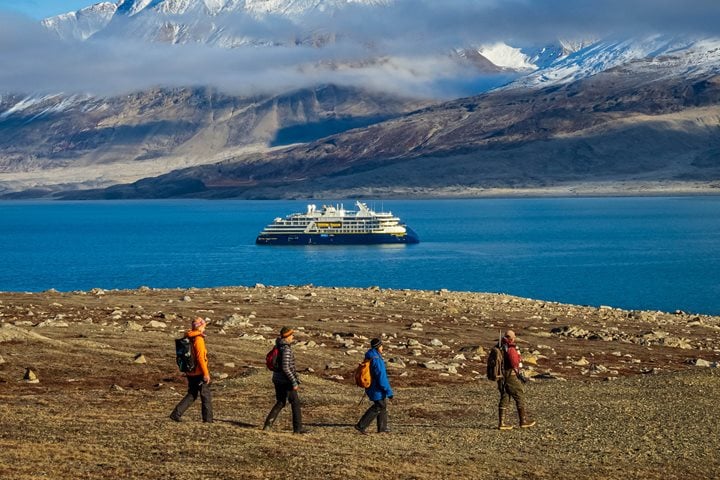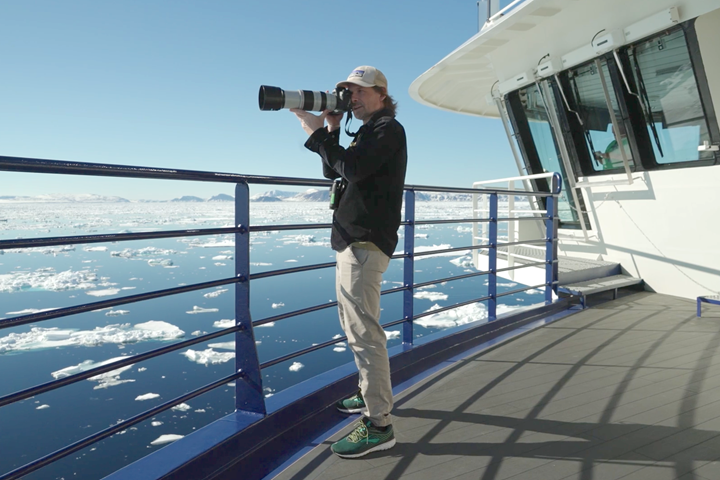Greenland is a massive island—the world’s largest to be exact—and an autonomous Danish territory that sits between the north Atlantic and Arctic Oceans. It’s an island unlike any other. Ice covers about 80 percent of the land, which is rimmed with majestic fjords and bays filled with rare wildlife like the elusive narwhal and a newly discovered population of polar bears. Thanks to its northerly position, largely above the Arctic Circle, Greenland is also gifted with some spectacular natural phenomena, including midnight sun and northern lights. Here are more unexpected facts about this Arctic wonder. Get Inspired by Photos, Videos, Webinars, Stories, and Exclusive Offers. Sign Up
It's Home to the World's Largest National Park
To experience untouched wilderness look no further than Northeast Greenland National Park. Its vastness eclipses the Grand Canyon, which is 200 times smaller. Given the remote location, no more than 500 visitors each year see crevasse-laced glaciers, spectacular fjords once said to hide mythical monsters and the remains of ancient Inuit settlements. The secluded wildlife metropolis is booming with arctic foxes, walruses and a flurry of birds like barnacle geese, snowy owls, ptarmigans, ravens and the white-tailed eagle. The waters that surround the mountain-lined coast harbor humpback, beluga and fin whales, plus several seal species. Come summer and the “Arctic Riviera” is bathed in sunlight that will make you forget you’re practically at the North Pole.

A Unique Polar Bear Population Was Recently Discovered There
A recent study funded by NASA discovered a unique group of polar bears living among the fjords of Southeast Greenland. Rather than relying on sea ice to hunt seals like most polar bears, this isolated and genetically distinct population—now the world’s 20th polar bear subpopulation—survives using ice melanges, a mix of sea ice and pieces of glacial ice which have carved off of the region’s tidewater glaciers. As sea ice continues to decline further each year, this surprising find sheds new light on this vulnerable species and ways it might be able to persist for longer periods, even in the face of a changing climate. On Southeast Greenland: Exploring at the Edge of the Ice Cap, you can learn more about these newly studied bears as you navigate the fjords, keeping a look out for this Arctic apex predator.
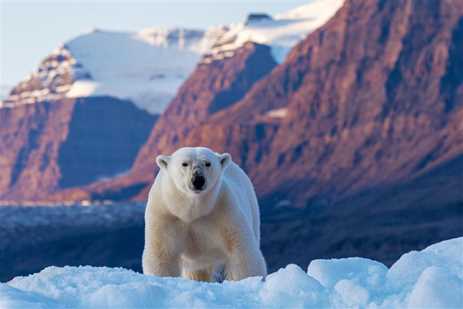
You Can See 500-Year-Old Mummies There
The Qilakitsoq mummies give visitors a glimpse of life in 1475 Greenland. About 50 years ago, six women and two children were found at a burial site near the settlement at Uummannaq. Miraculously, the cold temperatures and dry air kept their bodies impeccably preserved—not only were their skin, nails, hair, and eyebrows intact, most of the women still bared the marks of traditional Inuit face tattoos. They were also found with the amulets worn to protect against evil spirits as the person transitioned into the afterlife—it was believed that the dead crawled under a special carpet for a year before crossing over. Today, you can see these 500-year-old mummies on display at Greenland National Museum in Nuuk.

Inuit Hunters Invented the Kayak
You can thank the Inuit hunters for kayaking, a quintessential element of our expeditions from the Arctic to Antarctica, and Baja California to Costa Rica. The one-of-a-kind “qajaq,” which roughly translates to “hunter’s boat,” was invented in Greenland for hunting seals and whales. Each lightweight “qajaq” was custom made to fit the owner’s distinct shape and the original skin-on-frame models used dried harp seal skin stretched over a bowed structure. The pilot then wore a sealed "tuilik"—a waterproof, inflated anorak—to ensure no frigid water leaks through if the kayak capsizes.
The extremely maneuverable vessel is much thinner than the traditional kayak used recreationally today. If you're ever looking for a DIY project, Google Search has almost 8 million results for “Greenland kayak,” including several YouTube tutorials.
Read more
You'll Find the World's Fastest Flowing Glacier
Glaciers are abundant in Greenland, no doubt, but the Sermeq Kujalleq stands out from the rest. As the world’s fastest flowing glacier, it is part of the 37-mile-long Ilulissat Icefjord, a UNESCO World Heritage Site. The 1,200-square-mile stunner annually calves about 10 percent of all Greenland calf ice. Not surprisingly, the fjord is chock-full of incredible icebergs floating through on the way to Disko Bay as if they are in a massive Slushie that’s filled with humpback whales. The variations of blue change with the weather, creating a dreamlike experience as visitors hear the snap-crackle-and-pop of calving bergs that have been doing their thing for a quarter of a million years.


